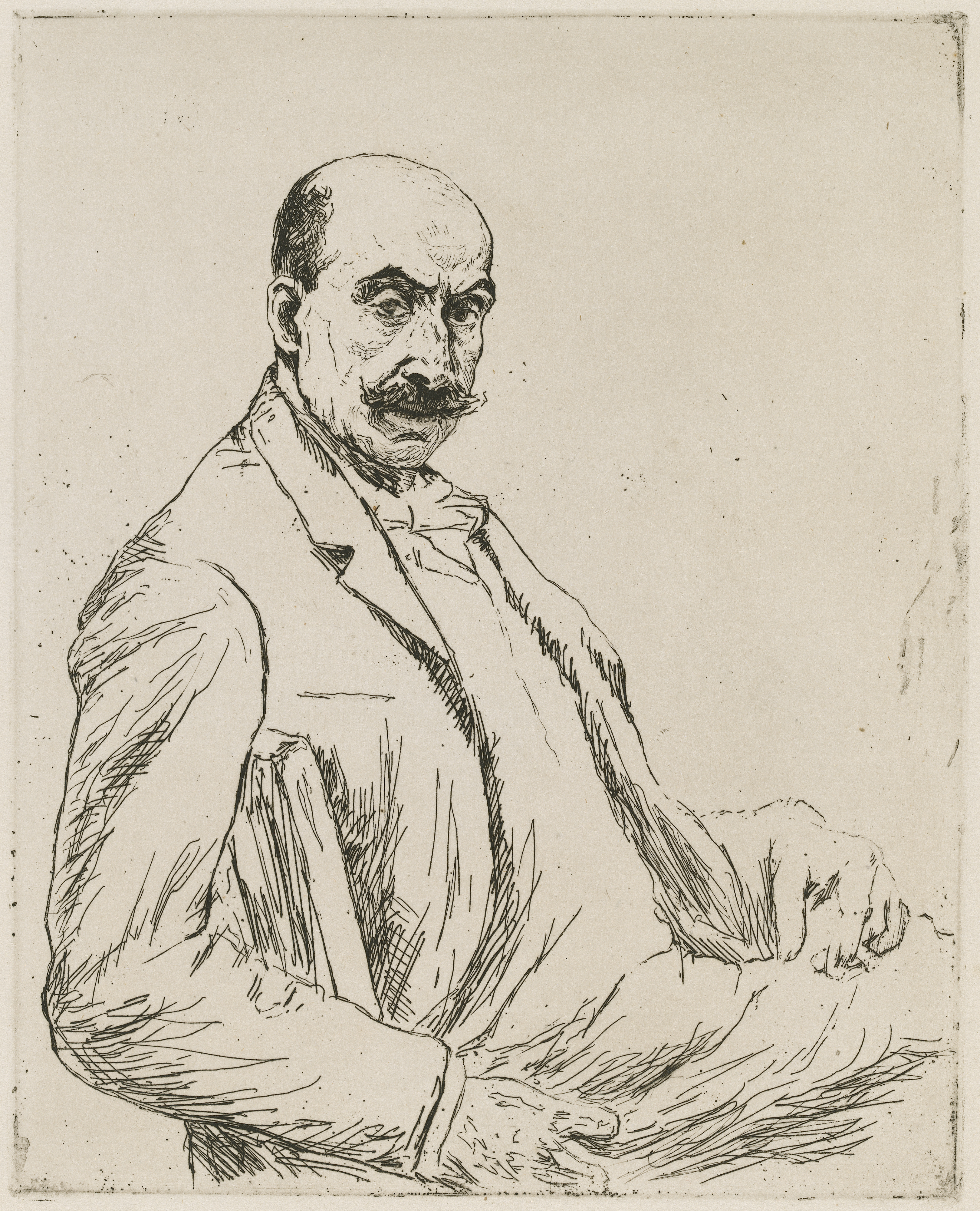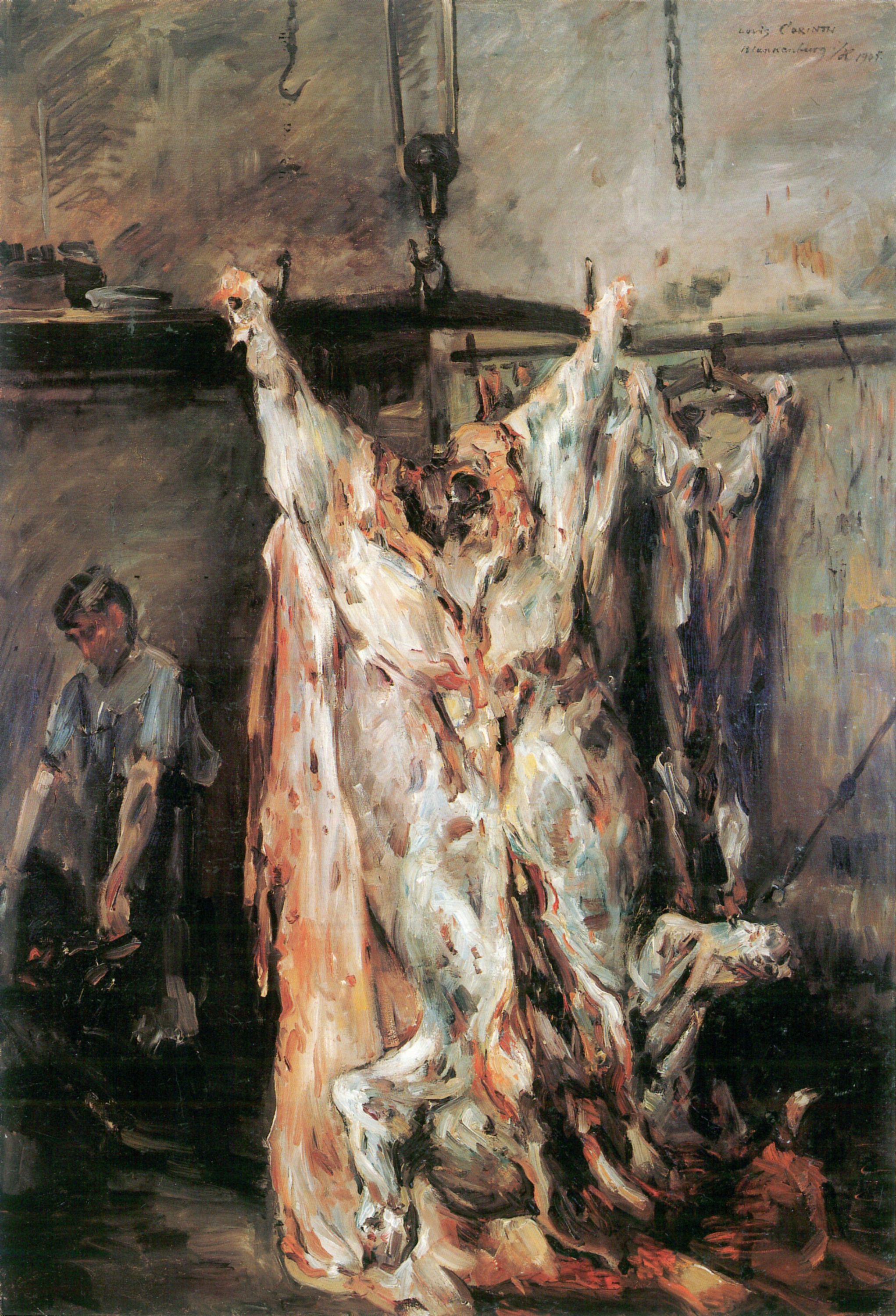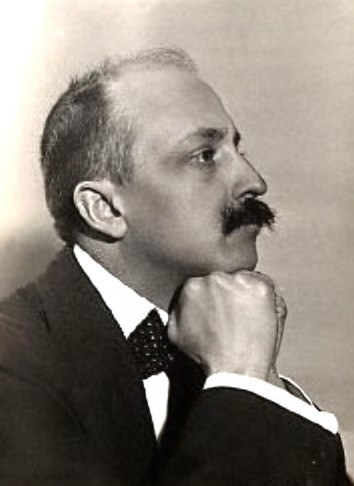|
Erster Deutscher Herbstsalon
Erster Deutscher Herbstsalon (First German Autumn Salon) was the title of an art exhibition that was organized in 1913 by Herwarth Walden in Berlin. Henri Rousseau memorial exhibition The exhibition opened on 20 September 1913 in rented rooms ("Lepke-Räume") in the Potsdamer Straße 75, on the corner of the Pallasstraße on the third floor, on 1200 square metres, not far from Walden's gallery Der Sturm#The Gallery, Der Sturm on der Potsdamer Straße 134a, and closed on 1 December 1913. The title of the exhibition refers to the Salon d'Automne held in Paris since 1903. The exhibition formed a contrast to the Sonderbund westdeutscher Kunstfreunde und Künstler, Sonderbundausstellung that had taken place in 1912 in Cologne and was dedicated to Impressionism, the more established modernism. There were artists in the autumn salon that had also exhibited there, but not come to the fore, like the painters of Der Blaue Reiter, as well as Carlo Mense and Alexander Archipenko. The latter ... [...More Info...] [...Related Items...] OR: [Wikipedia] [Google] [Baidu] |
Degeneration (Max Nordau)
''Degeneration'' (''Entartung'', 1892–1893) is a book by Max Nordau which was published in two volumes. Within this work he attacks what he believed to be degenerate art and comments on the effects of a range of social phenomena of the period, such as rapid urbanization and its perceived effects on the human body. Nordau believed degeneration should be diagnosed as a mental illness because those who were deviant were sick and required therapy. These comments stemmed from his background as a trained physician, taught by the Parisian neurologist Jean-Martin Charcot. Summary Nordau begins his work with a "medical" and social interpretation of what has created this Degeneration in society. Nordau divides his study into five books. In the first book, Nordau identifies the phenomenon of fin de siècle in Europe. He sees this as first being recognised, though not originating, in France, describing this phenomenon as "a contempt for the traditional views of custom and morality". He ... [...More Info...] [...Related Items...] OR: [Wikipedia] [Google] [Baidu] |
Max Liebermann
Max Liebermann (20 July 1847 – 8 February 1935) was a German painter and printmaker, and one of the leading proponents of Impressionism in Germany and continental Europe. In addition to his activity as an artist, he also assembled an important collection of French Impressionist works. The son of a Jewish banker, Liebermann studied art in Weimar, Paris, and the Netherlands. After living and working for some time in Munich, he returned to Berlin in 1884, where he remained for the rest of his life. He later chose scenes of the bourgeoisie, as well as aspects of his garden near Lake Wannsee, as motifs for his paintings. Noted for his portraits, he did more than 200 commissioned ones over the years, including of Albert Einstein and Paul von Hindenburg. Liebermann was honored on his 50th birthday with a solo exhibition at the Prussian Academy of Arts in Berlin, and the following year he was elected to the academy. From 1899 to 1911 he led the premier avant-garde formation in Germany ... [...More Info...] [...Related Items...] OR: [Wikipedia] [Google] [Baidu] |
André Derain
André Derain (, ; 10 June 1880 – 8 September 1954) was a French artist, painter, sculptor and co-founder of Fauvism with Henri Matisse. Biography Early years Derain was born in 1880 in Chatou, Yvelines, Île-de-France, just outside Paris. In 1895 he began to study on his own, contrary to claims that meeting Vlaminck or Matisse began his efforts to paint, and occasionally went to the countryside with an old friend of Cézanne's, Father Jacomin along with his two sons. In 1898, while studying to be an engineer at the Académie Camillo, he attended painting classes under Eugène Carrière, and there met Matisse. In 1900, he met and shared a studio with Maurice de Vlaminck and together they began to paint scenes in the neighbourhood, but this was interrupted by military service at Commercy from September 1901 to 1904. Following his release from service, Matisse persuaded Derain's parents to allow him to abandon his engineering career and devote himself solely to painting; subs ... [...More Info...] [...Related Items...] OR: [Wikipedia] [Google] [Baidu] |
Lovis Corinth
Lovis Corinth (21 July 1858 – 17 July 1925) was a German artist and writer whose mature work as a painter and printmaker realized a synthesis of impressionism and expressionism. Corinth studied in Paris and Munich, joined the Berlin Secession group, later succeeding Max Liebermann as the group's president. His early work was naturalistic in approach. Corinth was initially antagonistic towards the expressionist movement, but after a stroke in 1911 his style loosened and took on many expressionistic qualities. His use of color became more vibrant, and he created portraits and landscapes of extraordinary vitality and power. Corinth's subject matter also included nudes and biblical scenes. Early life Corinth was born Franz Heinrich Louis on 21 July 1858 in Tapiau, in the Province of Prussia in the Kingdom of Prussia. The son of a tanner, he displayed a talent for drawing as a child. In 1876 he went to study painting in the academy of Königsberg. Initially intending to be ... [...More Info...] [...Related Items...] OR: [Wikipedia] [Google] [Baidu] |
Max Beckmann
Max Carl Friedrich Beckmann (February 12, 1884 – December 27, 1950) was a German painter, draftsman, printmaker, sculptor, and writer. Although he is classified as an Expressionist artist, he rejected both the term and the movement. In the 1920s, he was associated with the New Objectivity (''Neue Sachlichkeit''), an outgrowth of Expressionism that opposed its introverted emotionalism. Even when dealing with light subject matter like circus performers, Beckmann often had an undercurrent of moodiness or unease in his works. By the 1930s, his work became more explicit in its horrifying imagery and distorted forms with combination of brutal realism and social criticism, coinciding with the rise of nazism in Germany. Life Max Beckmann was born into a middle-class family in Leipzig, Saxony. From his youth he pitted himself against the old masters. His traumatic experiences of World War I, in which he volunteered as a medical orderly, coincided with a dramatic transformation of his s ... [...More Info...] [...Related Items...] OR: [Wikipedia] [Google] [Baidu] |
Alfred Flechtheim
Alfred Flechtheim (1 April 1878 – 9 March 1937) was a German Jewish art dealer, art collector, journalist and publisher persecuted by the Nazis. Early years Flechtheim was born into a Jewish merchant family; his father, Emil Flechtheim, was a grain dealer. Alfred became a partner in his father's company after business internships in London and Paris. Art collector Flechtheim appeared in the art world shortly after 1900, with a collection of paintings by Vincent van Gogh, Paul Cézanne; French Avant garde early works of Pablo Picasso, Georges Braque and André Derain; paintings of Wassily Kandinsky, Maurice de Vlaminck, Alexej von Jawlensky, Gabriele Münter, and the Rhein Expressionists Heinrich Campendonk, August Macke, Heinrich Nauen, and . 1912 Sonderbund in Cologne Flechtheim organiseThe ‘Internationale Kunstausstellung des Sonderbunds Westdeutscher Kunstfreunde und Künstler�� that opened in Cologne on 25 May 1912. Known as the Sonderbund, the exhibition brought tog ... [...More Info...] [...Related Items...] OR: [Wikipedia] [Google] [Baidu] |
Paul Cassirer
Paul Cassirer (21 February 1871, in Görlitz – 7 January 1926, in Berlin) was a German art dealer and editor who played a significant role in the promotion of the work of artists of the Berlin Secession and of French Impressionists and Post-Impressionists, in particular that of Vincent van Gogh and Paul Cézanne. Starting out Paul Cassirer started out as a student of art history, and then became a writer in 1890s Munich, where he worked for the weekly magazine ''Simplicissimus'' and published two novels. Cassirer moved to Berlin, and he and his cousin Bruno, while still in their mid 20s, opened their gallery on the ground floor of Paul's house in the up-market Viktoriastrasse. The cousins came from a prominent family, whose members included the neurologist Richard Cassirer and the philosopher Ernst Cassirer. Paul was born into a Jewish family. His father, Louis, was an engineer and businessman, whose company — Kabelwerke Dr. Cassirer & Co. — manufactured telegrap ... [...More Info...] [...Related Items...] OR: [Wikipedia] [Google] [Baidu] |
Filippo Tommaso Marinetti
Filippo Tommaso Emilio Marinetti (; 22 December 1876 – 2 December 1944) was an Italian poet, editor, art theorist, and founder of the Futurist movement. He was associated with the utopian and Symbolist artistic and literary community Abbaye de Créteil between 1907 and 1908. Marinetti is best known as the author of the first ''Futurist Manifesto'', which was written and published in 1909, and as a co-author of the Fascist Manifesto, in 1919. Childhood and adolescence Emilio Angelo Carlo Marinetti (some documents give his name as "Filippo Achille Emilio Marinetti") spent the first years of his life in Alexandria, Egypt, where his father (Enrico Marinetti) and his mother (Amalia Grolli) lived together ''more uxorio'' (as if married). Enrico was a lawyer from Piedmont, and his mother was the daughter of a literary professor from Milan. They had come to Egypt in 1865, at the invitation of Khedive Isma'il Pasha, to act as legal advisers for foreign companies that were taking part i ... [...More Info...] [...Related Items...] OR: [Wikipedia] [Google] [Baidu] |
Hans Richter (artist)
Hans Richter (6 April 1888 – 1 February 1976) was a German Dada painter, graphic artist, avant-garde film producer, and art historian. In 1965 he authored the book ''Dadaism'' about the history of the ''Dada'' movement. He was born in Berlin into a well-to-do family and died in Minusio, near Locarno, Switzerland.''Oxford Dictionary of Modern and Contemporary Art'', Oxford University, p. 598 From Expressionism through Dadaism, Constructivism and Neoplasticism, he was one of the major figures of avant-garde art in the 1910s and 1920s and a catalyst for intellectuals and artists in many disciplines. Richter helped organise exhibitions which revived interest in Dada, both in the United States and Europe. In 1956 he made ''Dadascope'', a film dedicated to Dada poetry. Germany In 1908 Richter entered the Academy of Fine Art in Berlin, and the following year the Academy of Fine Art in Weimar. Richter's first contacts with Modern Art were in 1912 through the Blaue Reiter and in 1913 ... [...More Info...] [...Related Items...] OR: [Wikipedia] [Google] [Baidu] |
Robert Delaunay - Simultaneous Contrasts-Sun And Moon - 1912
The name Robert is an ancient Germanic given name, from Proto-Germanic "fame" and "bright" (''Hrōþiberhtaz''). Compare Old Dutch ''Robrecht'' and Old High German ''Hrodebert'' (a compound of '' Hruod'' ( non, Hróðr) "fame, glory, honour, praise, renown" and ''berht'' "bright, light, shining"). It is the second most frequently used given name of ancient Germanic origin. It is also in use as a surname. Another commonly used form of the name is Rupert. After becoming widely used in Continental Europe it entered England in its Old French form ''Robert'', where an Old English cognate form (''Hrēodbēorht'', ''Hrodberht'', ''Hrēodbēorð'', ''Hrœdbœrð'', ''Hrœdberð'', ''Hrōðberχtŕ'') had existed before the Norman Conquest. The feminine version is Roberta. The Italian, Portuguese, and Spanish form is Roberto. Robert is also a common name in many Germanic languages, including English, German, Dutch, Norwegian, Swedish, Scots, Danish, and Icelandic. It can be u ... [...More Info...] [...Related Items...] OR: [Wikipedia] [Google] [Baidu] |


.jpg)
